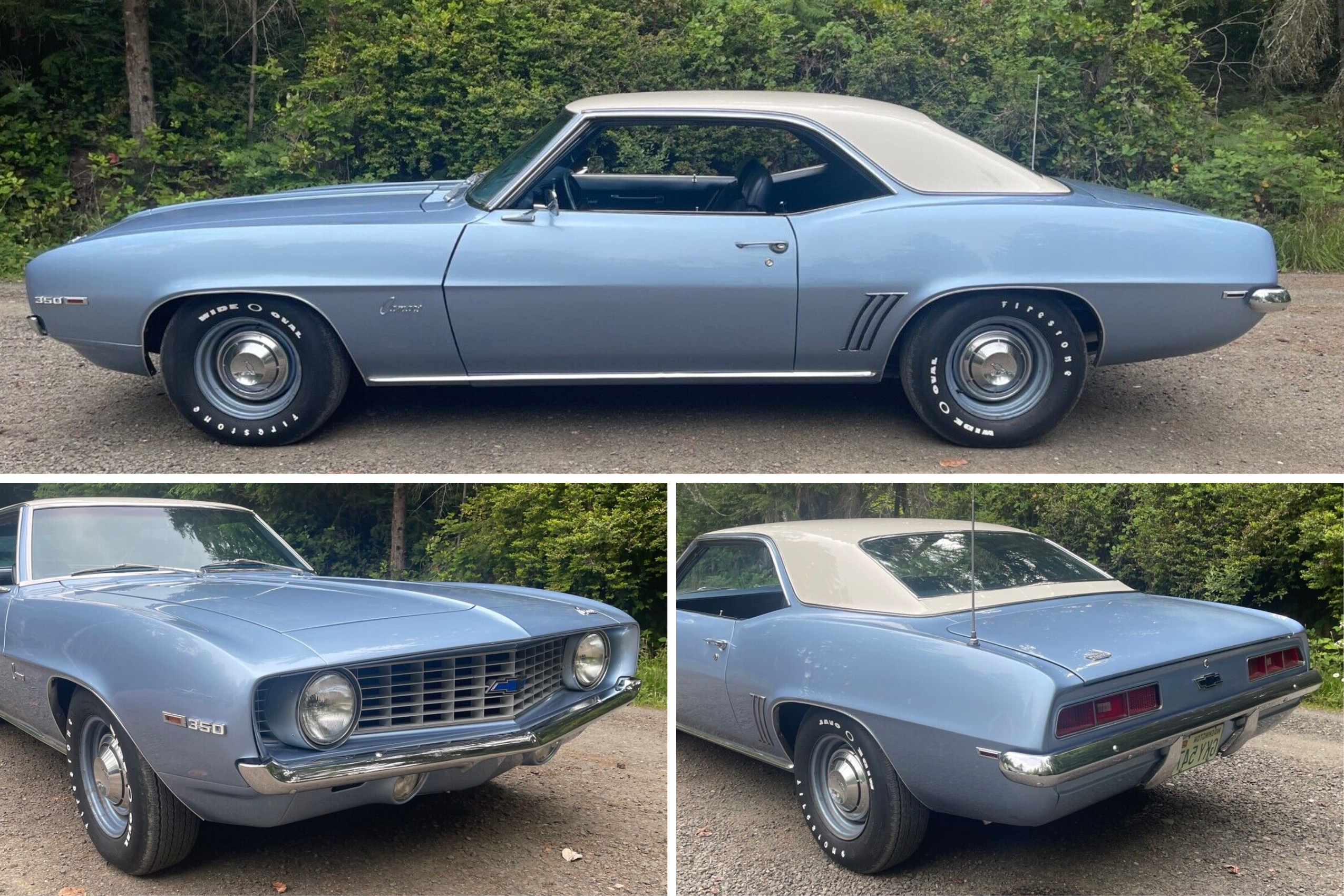Introduced in 1966 as a late response to the Ford Mustang, the first-generation Chevrolet Camaro remained in production until 1969. While not quite as popular as the Mustang, the Camaro performed well, moving 220,906 examples in 1967. Sales increased to 235,147 units in 1968 and jumped to 243,085 cars in the first-gen Camaro’s final year on the market.
1969 gave us the most aggressive-looking iteration of the pony thanks to all-new sheet metal, a V-shaped front grille, and beefier rear fenders. Moreover, it was also the year that included the most diverse lineup. In addition to the RS, SS, and Z28 models, Chevrolet also rolled out a couple of COPO muscle cars.
The first one, known as COPO 9561, was born when Yenko Chevrolet used the Central Office Production Orders system to request 201 cars fitted with the 427-cubic-inch (7.0-liter) L72 engine. Why wasn’t it already available in the Camaro?
Well, a GM corporate edict forbade Chevy from installing engines larger than 400 cubic inches (6.6 liters) in midsize and smaller cars. Yenko and Chevrolet used the COPO system as a loophole and kickstarted a special run that eventually included around 1,000 cars ordered by various dealerships.
The second COPO was identified by number 9560 and also left the assembly line with a 427 V8. However, this mill had very little in common with the L72. An all-aluminum big-block designed specifically for drag racing, it was hand-built and capable of more than 500 horsepower with the proper tuning. Called the ZL-1, the package was conceived by drag racer Dick Harrell and ordered through Fred Gibb Chevrolet. Only 69 cars were commissioned.

All told, the 1969 pony car is the most desirable first-gen Camaro for two reasons: it looks the part in just about any configuration and was available with a long list of high-performance engines. And you don’t have to chase a costly COPO version to park a rare Camaro in your driveway.
The seemingly mundane example you see here, which isn’t even an SS, is actually a rare gem. That’s because it hides a hard-to-find engine under the hood, and it’s dressed in a rare two-tone suit.
A quick look at the front fenders will immediately tell you what to expect: this Camaro left the factory with a 350-cubic-inch (5.7-liter) V8. But which version is it? That’s an essential question because Chevrolet offered no fewer than four 350s during the 1969 model year.
The L48 is arguably the most iconic. Rated at 295 horsepower until late 1968, it was upgraded to 300 horses in early 1969. Then there’s the L65, which slotted right under the L48 with a power rating of 250 horses.

This Camaro draws juice from the small-block that preceded the L65. I’m talking about the LM1, produced for only four months, from September to December 1968. A four-barrel version of the 350 V8, it came with 255 horsepower and 365 pound-feet (495 Nm) of torque on tap.
While nowhere near as powerful as the 396-cubic-inch (6.5-liter) big-block, it was a great way of getting a fast Camaro without the pricey Super Sport package. An affordable sleeper, if you will.
But how rare is the LM1? Well, records indicate that only 4.2% of the Camaros sold during the 1969 model year got the four-barrel 350 V8. That’s 10,406 examples. Sure, it’s not as rare as the COPO twins, but it’s much scarcer than the SS or the Z28. The latter, for instance, was produced in a whopping 20,302 units. But there’s also the two-tone paint, yet another rare option in 1969.
This Camaro left the factory in a lovely Glacier Blue body paired with a Dover White roof. I’m talking about a metal roof and not a vinyl top. There’s no info on how many were finished precisely like this, but we’re probably looking at only a few hundred cars. While I’ve seen quite a few Glacier Blue Camaros on sale in recent years, none of them had the white metal top. Moreover, most of them were SS models.

Rareness aside, this 1969 Camaro is also an extremely nice survivor. While it has been repainted in its correct factory colors, it’s rust-free and retains all its original body panels. The interior looks almost perfect, while the engine and the transmission show matching numbers. The seller also believes that the 59,227 miles (95,317 km) displayed on the odometer are genuine.
If it’s something you’d park in your garage, this Chevy is being auctioned off as we speak. But it’s not exactly cheap. Bidding has reached $35,900 with three days to go, but the reserve is still in place. The “buy it now” sticker is set at $55,000. It seems like a lot for a non-SS car, but I guess the super nice condition has much to do with the premium.
